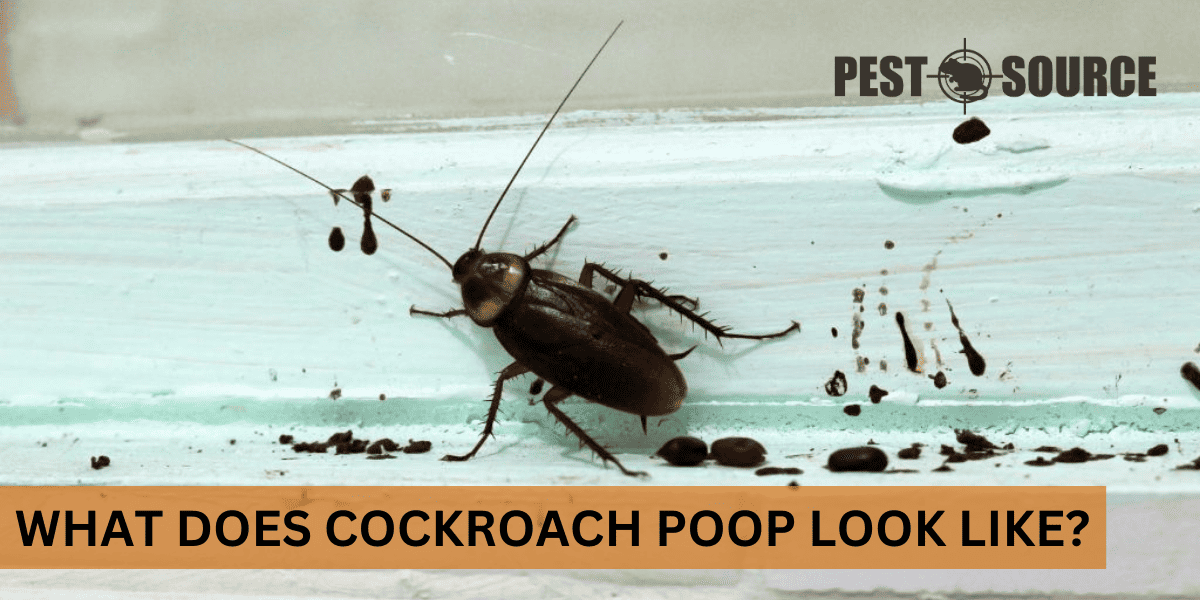Cockroach droppings resemble small, dark specks or cylindrical pellets, often mistaken for pepper or coffee grounds. The appearance can vary depending on the cockroach species. Identifying cockroach feces is crucial for detecting an infestation and taking prompt action. This article offers guidance on recognizing these signs and implementing effective control measures.
POINTS
- Cockroach feces vary in appearance by species, with American cockroach droppings being larger and more cylindrical, while German cockroach feces are smaller and resemble ground coffee or black pepper.
- The presence and quantity of cockroach droppings are indicators of the severity of an infestation, with common areas for droppings including kitchen appliances, cabinets, and bathroom fixtures.
- Cockroach droppings pose health risks, including the potential to carry pathogens and trigger allergies and asthma; proper cleaning and disinfection are crucial for safety.
- Preventative measures are key to reducing the likelihood of cockroach infestations and include sealing entry points, proper food storage, regular trash disposal, clutter reduction, and fixing leaks.
- Cockroach eggs, or oothecae, should be identified and disposed of carefully, and professional pest control may be necessary for severe infestations.
What Does Cockroach Poop Look Like: Characteristics and Identification
Cockroach poop is a telltale sign of an infestation and identifying it correctly is crucial for effective pest control. The droppings of these pests vary in appearance, but typically they look like small, dark specks or stains. Depending on the species, such as the American or German cockroach, the size and shape of the feces can differ. American cockroach droppings are larger and more cylindrical with blunt ends, often compared to a grain of rice. In contrast, German cockroach feces are smaller and may look like ground coffee or black pepper.


The ability to differentiate cockroach poop from other insects and household residues is important. For example, mouse droppings are similar in size to those of large cockroach species but have pointed ends. Additionally, factors like diet and environmental conditions can alter the appearance of cockroach feces. A diet rich in certain foods can lead to lighter or darker droppings, and in more humid environments, the feces may smear, creating streaks rather than distinct pellets.
Cockroach Droppings and Infestation Indicators
The presence and quantity of droppings are direct indicators of the severity of a cockroach infestation. A higher number of droppings usually signifies a larger or more active infestation. Cockroaches are nocturnal and elusive, so their feces are often the most visible evidence of their presence.
Common areas where you might find cockroach droppings include:
- Underneath and behind kitchen appliances
- Inside cabinets and pantries
- Near food sources
- Along baseboards and in corners of rooms
- In and around bathroom fixtures
Smear marks and droppings on walls are also a sign of a significant infestation, as cockroaches tend to defecate where they rest or travel.
Recognizing the difference between fresh and old droppings is essential in assessing infestation levels. Fresh cockroach feces are dark in color and may appear slightly moist, while older droppings fade to a duller, grayish color and become brittle. The discovery of fresh droppings indicates current activity and the need for immediate pest control measures.
Health Risks and Cleaning Guidelines for Cockroach Feces
Cockroach droppings are not just unsightly; they pose several health risks. These pests can carry pathogens that may cause diseases such as salmonella and E. coli infections. Their feces, along with shed skins and saliva, can also trigger allergies and asthma, especially in children. Therefore, it’s imperative to clean up cockroach droppings promptly and effectively.
When cleaning cockroach feces, follow these guidelines to ensure safety and thoroughness:
- Wear Protective Gear: Always use gloves and a face mask to prevent direct contact with droppings and inhalation of harmful particles.
- Vacuuming: A vacuum with a HEPA filter can be used to remove droppings from surfaces. Immediately dispose of the vacuum bag or clean the vacuum canister outside.
- Disinfecting: After vacuuming, disinfect surfaces using a mixture of bleach and water (one part bleach to ten parts water) or a household disinfectant. This helps to kill any remaining germs.
- Prevent Stains: On walls and other hard surfaces, use a soft cloth to apply the disinfectant, being careful not to rub the droppings and create smears.
- Regular Cleaning: Maintain a routine cleaning schedule to monitor and manage any new signs of infestation.
Preventative Measures and Handling Cockroach Eggs
Prevention is always better than cure, especially when it comes to pest infestations. To minimize the chances of a cockroach infestation and the consequent droppings, consider the following preventative measures:
- Seal Entry Points: Close gaps around windows, doors, and utility pipes to prevent cockroach entry.
- Proper Food Storage: Store food in sealed containers and avoid leaving pet food out overnight.
- Regular Trash Disposal: Take out the trash regularly and use cans with tight-fitting lids.
- Remove Clutter: Reduce clutter where cockroaches can hide and breed.
- Fix Leaks: Repair any water leaks as cockroaches are attracted to moisture.
In addition to droppings, you may also encounter cockroach eggs, known as oothecae. These egg cases are oblong and can vary in color from tan to dark brown. They are often found in secluded areas, such as behind furniture or in cupboards.
Handling cockroach eggs involves:
- Identification: Recognize the oothecae and differentiate them from droppings. They are larger and capsule-shaped.
- Disposal: Vacuum them up carefully and dispose of them securely to prevent hatching.
- Professional Help: If you find multiple egg cases, consider seeking professional pest control assistance.
For severe infestations, professional pest control options should be considered. Experts can offer targeted treatments and advice for preventing future infestations. They have the knowledge and tools to handle large-scale problems, ensuring your home becomes and remains cockroach-free.



